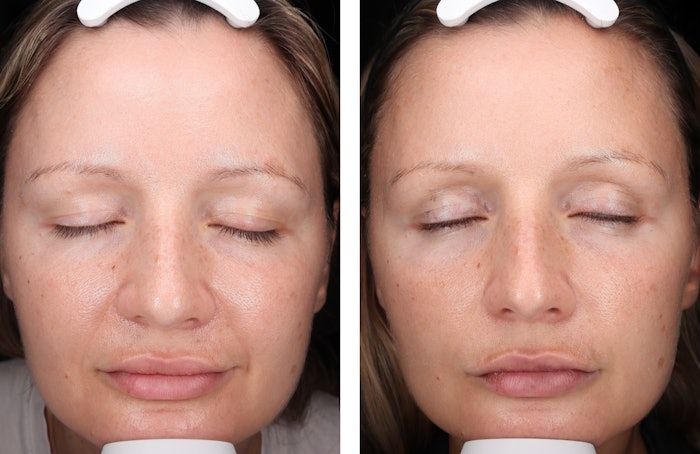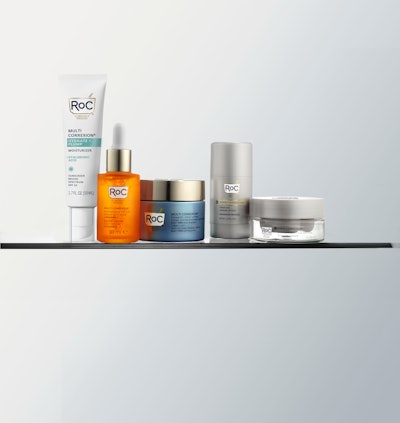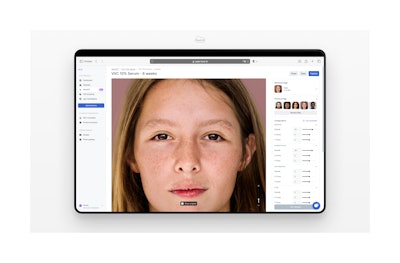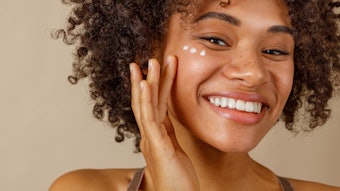
Curious about the tricks of the before-and-after trade? Read our new report, "The Misleading Beauty Befores and Afters That Even the Pros Miss."
This article is only available to registered users.
Log In to View the Full Article
Curious about the tricks of the before-and-after trade? Read our new report, "The Misleading Beauty Befores and Afters That Even the Pros Miss."
In a saturated beauty market overrun with claims, proof is everything. As consumers increasingly place value on efficacy and value, and as social media platforms become the go-to venue for product discovery and education, before-and-after imagery is more important than ever. Yet so much of it is boring, clinical and, often, difficult to interpret. Or, in the worst cases, unreliable (sometimes intentionally so). But it doesn’t have to be this way. From better photography and testing techniques to emerging AI tools to brand best practices, beauty players have more resources than ever to prove their worth in ways that are compelling to even the most scroll-happy social media user.
Show, Don’t Tell: Building Credibility Through Proof
“You will have to do more than just tell to sell,” said Amna Abbas, senior consultant at Euromonitor International, in a 2023 report. “Before-and-after pictures or testimonials are common methods that demonstrate effectiveness. Investing in studies or trials can also help substantiate claims. Brands need to show the benefits to gain credibility.”
Substantiating efficacy is critical, Abbas added, noting that “85% of consumers would pay more for beauty products with proven benefits.”
The Power of Before-and-After Images in Building Trust and Driving Purchases
 RoC Skincare's RoC 35 protocol was backed up by clinical photography before-and-afters.
RoC Skincare's RoC 35 protocol was backed up by clinical photography before-and-afters.
Brian Ecclefield, CEO and founder of FDA-registered clinical testing lab Validated Claim Support, concurs: “A high-quality before and after image offers a huge range of benefits. It pushes transparency. You’re no longer stating a claim, you’re demonstrating it. Consumers are more interested than ever in transparency throughout the product supply chain, and that is pushing more and more into the clinical research side as well. Not misleading consumers is critical for ethical brands, and it starts with high-quality underlying images.”
Hutcheson adds, “Retailers also recognize the power of before and after imagery in boosting consumer confidence and influencing purchase decisions. These visuals not only help products stand out on shelves and online, but also serve as compelling proof points that simplify the decision-making process for shoppers. Seeing real, visible results makes consumers more likely to trust the brand and make a purchase.”
Ecclefield adds to Hutcheson’s points: “High-end retailers—especially on air and online—demand compelling visuals, and bars and graphs will only get you so far. High-end marketing-ready images sell products on the air and online, hands down. The standards are high as well—you need to know the requirements before building your [before-after] shoot and clinical study, and make sure that they’re all put into play.”
Brands aren’t the only crucial source of befores and afters.
“Beyond brand-created visuals, consumers now share their own before-and-after photos thanks to the rise of social media, underscoring the value they place on trustworthy, relatable visuals,” explains Hutcheson. “Influencers also recognize the impact of these images, creating their own to connect and build trust with their audiences. We frequently receive positive feedback from people who have seen these transformations, with many sharing how the results align with their own experiences—reinforcing both product credibility and consumer confidence.”
“Influencers/testimonials are great,” says Ecclefield, “but … real studio images will show if your product works very well or not in a very different way than Tik Tok. Sometimes it's not necessary—moisturizers can be totally efficacious with minimal visual changes on healthy skin. Sometimes the value is in the instrumentation. When you really want to show that your product works as a hero category leader, you need high-end, marketable, controlled images.”
Furthermore, says Ecclefield, befores and afters “offer a summary of the technical data, which is harder to understand for a layperson. Statistical significance and p values are not something that many consumers have an extensive background in, but if you can show a controlled, clear representation of how a product impacts a real, relatable person, you can accurately summarize a study with just a set of photos.”
Tapping Into Advanced 3D Imaging and Skin Aging Algorithms
“High-resolution digital imaging is essential [for establishing product efficacy], as are different lighting conditions to highlight various skin conditions—visible light, cross-polarized and UV,” says Arthur “Art” Pellegrino, RoC Skincare’s chief science officer. “Some imaging techniques penetrate deeper into the skin, while others focus on the surface, with some specifically revealing pigmentation or redness.”
Pellegrino offers a peek into the brand’s process, noting, “The lighting conditions, camera settings and software all need to work together seamlessly to capture these diverse images. RoC utilizes this advanced software to conduct before-and-after imaging for every one of their products and clinical studies. The digital imaging software plays a pivotal role in offering consumers objective, scientific evidence to prove product efficacy, as it allows us to obtain specific measurements, such as the depth of wrinkles, enabling us to track any reductions in wrinkles over time and quantitatively measure improvement.”
He adds, “Similarly, if focusing on pigmentation—like a dark or age spot—advanced software can differentiate between the pigmentation and the surrounding skin, allowing for accurate, quantitative tracking of changes. Today’s software can also quantify the type of fine line or wrinkle, the size and intensity of dark spots, and the level of redness in the skin, providing valuable and specific insights into skin health and improvement over time.”
Pellegrino continues, “Traditionally, most of this imaging has been 2D, but we now have access to 3D imaging, which opens up new possibilities. For instance, when looking at lip volume, the surface contour around the eye, or even wrinkle depth, we can capture these details more accurately because the camera systems now incorporate 3D imaging. This advancement provides a better way to measure these features and, more importantly, offers a more impactful way to demonstrate the benefits of a product to consumers, as compared to the limitations of 2D imaging.”
The chief science officer notes, “Given RoC’s reputation as a recognized leader in unretouched before-and-after imaging, RoC has been pulled to collaborate closely with the company that manufactures the digital imaging equipment. The equipment makers want to work with RoC specifically to fine-tune and customize their software for skin imaging, especially with RoC’s unique advancement in incorporating skin aging algorithms. We are actively working together to develop custom software tailored to consumers’ specific needs. While digital imaging is the best tool for wrinkle measurement—providing quantitative and objective data—it’s important to complement this with other instrumentation, such as a Corneometer, to measure hydration levels and a Cutometer for skin elasticity, as well as expert grading. RoC utilizes all of these measures together to provide the most comprehensive analysis of our products.”
AI Revolutionizes Skin Care: Personalized Routines, Predictive Tools & Visual Innovations
RoC’s Pellegrino notes that emerging AI tech is also enhancing the consumer experience. The brand’s AI Skin Insight tool analyzes users’ skin to determine their skin age and overall skin health via a selfie and survey questions. Users then receive a personalized skin care routine based on the results.
“This gives the consumer a more individualized analysis that can help them better understand which products to use, and until now, this type of assessment could only be done by an expert grader,” says Pellegrino.
AI platforms offer additional functionalities.
 With SkinGPT, marketers simply upload a "before" image, apply a product effect model based on clinical data, and instantly generate a realistic ‘after’ image.Haut.AI
With SkinGPT, marketers simply upload a "before" image, apply a product effect model based on clinical data, and instantly generate a realistic ‘after’ image.Haut.AI
SkinGPT allows users to visually predict how external factors—such as UV exposure, active ingredients or skin care products—will impact a consumer’s skin over time. Complementing this innovation is GenerativeSkin, a direct-to-consumer visual library that showcases the effects of skin care ingredients using SkinGPT’s technology. This concept was designed to address the growing trend among Gen Z of relying on ChatGPT for dermatological advice. It also aims to guide the emerging Gen Alpha "Sephora Kids" away from using harsh actives like retinol, promoting safer, more informed skin care choices.
“SkinGPT can provide realistic forecasts for specific skincare products or treatments by drawing on real clinical data,” HautAI’s founder and CEO, Anastasia Georgievskaya, noted at the time. “If a brand has, for example, real data showing how their serum reduces redness or boosts hydration, SkinGPT can learn from this data and apply similar changes to skin for each individual. This way, customers can see how their skin might actually respond to that product.”
Georgievskaya added, “SkinGPT is incredibly powerful for marketing teams who often struggle to produce compelling before-and-after visuals. In many cases, clinical images aren’t aesthetically polished enough for campaigns, or the brand has to wait months for results before they can share them. What typically happens is a time-consuming photo editing process to recreate those clinical transformations on more appealing images—sometimes it can take hours just to produce one set of visuals. With SkinGPT, all of this can be done in seconds. Marketers simply upload a ‘before’ image, apply a product effect model based on clinical data, and instantly generate a realistic ‘after’ image that’s both visually pleasing and scientifically credible.”
The executive concluded, “Even better, SkinGPT offers a highly engaging way to showcase a product’s value. Instead of relying on static before-and-after images or text-heavy claims, brands can let consumers virtually ‘try on’ the product to see how it might improve their skin.”
Ethical Best Practices for Befores and Afters
“It’s crucial to use unretouched images that are representative of the entire population of subjects, rather than selecting just one ‘best’ outlier,” says Pellergrino. “RoC takes this approach to ensure that the images accurately reflect the study participants as a whole, and never retouches any before and after imagery.”
He adds, “Furthermore, it's vital that before and after images represent a diverse demographic. RoC's clinical testing ensures that the images feature real patients of varying skin tones, Fitzpatrick types, and ages to demonstrate the product's universal applicability. These images are taken at a third-party, independent, clinical efficacy testing site as part of our scientific clinical protocol, which guarantees the integrity and credibility of the data.”
Pellegrino continues, “It’s also crucial to conduct before-and-after imaging for every study to ensure reliable, consistent results across a brand’s portfolio. RoC measures both short (immediate to one day) and long term (4, 8 and 12 week) results in our studies, as it’s our philosophy to always showcase the full picture -- what benefits you’ll receive right after using the product and with continued, long-term use. Additionally, I recommend using the most advanced digital imaging software available, to obtain the most objective, precise results.”










